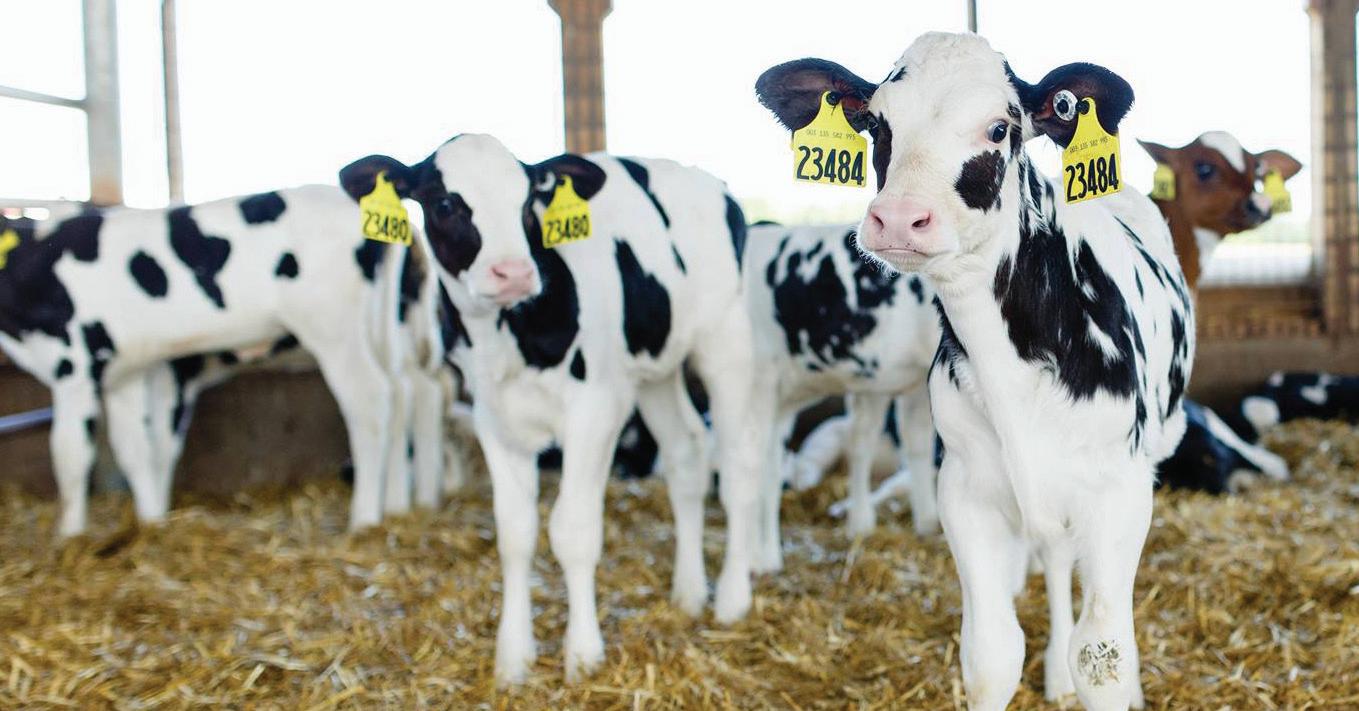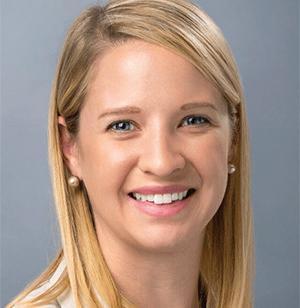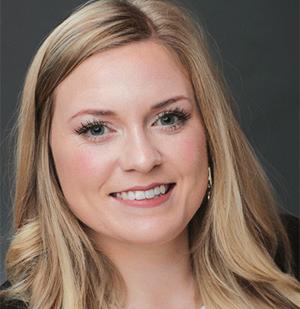








 Animal Care Environmental Stewardship
Antibiotic Stewardship Workforce Development
Animal Care Environmental Stewardship
Antibiotic Stewardship Workforce Development










 Animal Care Environmental Stewardship
Antibiotic Stewardship Workforce Development
Animal Care Environmental Stewardship
Antibiotic Stewardship Workforce Development

Today’s consumers are more interested in their food than ever before: food safety and nutritional value, how food is produced, who’s producing it, animal care and employee management. By participating in the National Dairy Farmers Assuring Responsible Management (FARM) Program, farmers demonstrate a commitment to quality farm practices and safe, wholesome dairy products. Through industry collaboration, we are earning consumer trust by establishing the highest standards for the dairy industry in the following areas: Animal Care, Antibiotic Stewardship, Environmental Stewardship and Workforce Development.
FARM was created by the National Milk Producers Federation (NMPF) with support from Dairy Management Inc.™ (DMI) in 2009. Program participation is open to all dairy farmers, cooperatives and processors. Participants follow rigorous guidelines to ensure the utmost social responsibility on our nation’s dairy farms, while recognizing there is always room for improvement. FARM creates a culture that inspires our dairy community to work every day toward positive change. Strong farm management practices paired with smart decisions are ethical obligations of any dairy business and are vital to ensure long-term success.
DMI is funded by America’s 34,000-plus dairy farmers and dairy importers. DMI and its related organizations work to increase demand for dairy products through research, education and innovation, and to maintain confidence in dairy foods, farms and businesses. Find out more: dairy.org
NMPF is the voice of dairy cooperatives at our nation’s capital. Its mission is to foster an economic and political climate in which dairy farmers, and the cooperatives they own, can thrive and prosper. Success in doing so assures consumers of wholesome and nutritious dairy products at affordable prices.
Find out more: nmpf.org
98% of the U.S. milk supply comes from farms participating in the FARM Animal Care Program

The FARM Animal Care Program’s five main areas are calf care, non-ambulatory cows, euthanasia, stockmanship and fitness to transport.
FARM made updates to the animal care standards after an 18-month stakeholder review. The newest update, Version 4 of the program, reveals standards supporting:
Closer farmer-veterinarian relationships
Continuing education requirements for all individuals with animal care responsibilities
Pain management standard for disbudding animals
Enhanced record keeping
The new FARM Animal Care Version 4 is active from Jan. 1, 2020 to Dec. 31, 2022.
The FARM Animal Care Program demonstrates that dairy farmers share consumers’ values when it comes to quality animal care and safe, wholesome milk.
nationaldairyfarm.com
Resources are available to help dairy farmers meet all Version 4 standards, including templates, FAQs, continuing education videos and other tools. The new evaluation prep guide includes key facts and how to prepare for an evaluation or verification to meet Version 4 standards.


In a situation where credible evidence or allegations of willful mistreatment or neglect of animals is reported to the FARM Program, a thorough review of the allegation is completed by an ad hoc FARM committee. In situations where evidence is deemed credible, a third-party audit of the alleged animal care issues at the farm is conducted to determine the validity of the evidence or allegations. In any willful mistreatment investigation, the hope is that the allegations or evidence are proven to be untrue.
If evidence or allegations are verified through the audit, the protocol requires the farm to take mandatory corrective action steps before FARM will return the farm to good standing and full certification in the program. Corrective action steps are verified through a follow-up audit. Only after successful completion and verification that the corrective action steps have been implemented is the farm reinstated to good standing with the FARM Program.
The National Dairy FARM Animal Care Program standards are formally revised every three years through a strenuous, year-long process.

Dedicated producers serving a three-year term who provide guidance and input for consideration in FARM’s ongoing and future development. Members work to champion FARM within other organizations, communities and throughout the industry.
Dairy farmers, Farmer Advisory Council chairperson and vice chairperson, and veterinarian membership representation who review the latest research and aggregated FARM Animal Care Program data, and provide recommendations to the NMPF Animal Health & Well-Being Committee and NMPF Board of Directors.
Members are appointed by interested National Milk Producers Federation member cooperatives. The committee coordinates NMPF’s participation in animal health contingencies, including development of animal health research priorities, and provides oversight for the FARM Animal Care Program.
33,163 second-party evaluations on 31,136 farms
Version 3 standards were active from Jan. 1, 2017 – Dec. 31, 2019.
CIPs were resolved in an average of 9 months (standards require resolution within 3 years)
Written Newborn and Milk-Fed Dairy Calf Management Protocols, the most frequent CIP, accounted for 10% of all CIPs
AvG. 0.26 Mandatory Corrective Action Plans created per evaluation
evaluation
Failed standards that trigger CIPs:
Written protocols for:
• Newborn/milk-fed calves
• Pain management
• Non-ambulatory animal management
• Euthanasia
Locomotion score: ≥ 95% 2 or less
Body condition score:
≥ 99% 2 or more
Hock/knee lesions: ≥ 95% 2 or less
MCAPs were resolved in an average of 6 months (standards required resolution within 1 year)
Failed standards that trigger MCAPs:
A valid VCPR form
A signed Dairy Cattle Care Ethics Form and training documentation for all employees with animal care responsibilities

Not practicing routine tail docking
had a valid veterinarian-clientpatient-relationship (VCPR) form
77%
had annual employee training
99%
78% did not practice routine tail docking
From 2017 to 2019, 31,136 dairy farms were evaluated by the FARM Animal Care Program.

Antibiotic use in livestock products continues to be a hot global topic. In 2019, NMPF and FARM demonstrated the U.S. dairy industry’s commitment to responsible and prudent use of antibiotics at several major conferences. Through NMPF, FARM advocated on behalf of dairy farmers by sharing their story and commitment to responsible use of antibiotics in dairy cattle for treatment, control and prevention of disease.

Among FARM’s activities within the public health community, NMPF highlighted the program before the Presidential Advisory Council on Combating Antibiotic-Resistant Bacteria (PACCARB), and joined more than 200 participants worldwide, the U.S Department of Health and Human Services (HHS) and the Centers for Disease Control and Prevention (CDC) as part of the Antimicrobial Resistance (AMR) Challenge, a year-long effort to accelerate the fight against antimicrobial resistance across the globe.
A farmer with a valid and active VCPR, consults with a veterinarian on development of treatment and recordkeeping protocols that address the proper use of antibiotics.
Of those, 78% had a valid VCPR, and the remaining 22% obtained one within the next 6 months.
The Workforce Development Program launched in 2018 by gathering expert and stakeholder input from the entire dairy value chain – farmers, cooperative staff, academics and other workforce development experts. Their input ensured that the Workforce Development materials are diverse and relevant for today’s dairy industry.

In 2019, the program grew with the publishing of new farmer resources, sharing of HR and safety best practices and development of a secondparty evaluation tool.
The FARM Safety Reference Manual provides relevant and useful information on workplace safety and health. It helps dairy owners and employees develop and implement a robust and practical safety program. The manual is a collaboration between the Idaho Dairymen’s Association, the Idaho Milk Processors Association and NMPF.

The FARM Human Resources Reference Manual helps dairy farm owners, managers and other relevant staff develop an on-farm HR program. An effective HR program supports a positive and safe work environment that helps attract and retain a professional, high-quality and engaged workforce. A downloadable, customizable set of HR templates and a sample employee handbook accompany the FARM HR Manual.

FARM Workforce Development also began development of a second-party evaluation tool that cooperatives and processors may voluntarily choose to implement with their members. The evaluation’s goals will be to help farms learn about HR and safety best management practices, identify which best practices will be most useful to implement on their farm and track improvement over time.
The evaluation tool was tested by 10 U.S. dairy cooperatives and 45 dairy farmers and feedback was received from this pilot. Additionally, a public comment period was conducted, giving stakeholders from across the dairy value chain the opportunity to provide feedback on the evaluation. Plans are to make the evaluation tool available to program participants in 2020 after approval by the NMPF board of directors.
The Environmental Stewardship Program has experienced steady growth year-over-year, with more than 1,390 evaluations completed on 1,205 dairy farms nationwide since 2017. FARM stakeholder groups and the advisory committee regularly reviews and incorporates new science to ensure robust and reliable results. They also evaluate and meet expanding interests and needs of FARM participants. Version 1 closed in 2019 and the launch of Version 2 took place in February 2020. Version 2 contains new data inputs, updated crop emissions factors and a more detailed breakdown of results.
1. New data inputs
Solid-liquid separation will be an option for manure management strategies.



Solar and wind energy generated on the farm will be asked about.
The evaluation is based on data from the preceding 12-month period. Previously, data was specific to the date of the evaluation.
Nutrient management plan questions will capture information for the Innovation Center for U.S. Dairy’s stewardship commitment metric, “Do you implement and maintain a written nutrient management plan?” These questions are unrelated to FARM’s environmental stewardship greenhouse gas (GHG) model.
2. New crop emissions factors
Program participants won’t see this change, but the model algorithms are updated using crop emissions factors from 2013-2017 production data. The previous model used 20042008 data from the original Life Cycle Assessment (LCA).
3. More detailed results
Co-ops and processors will now be able to see their GHG results broken down by gas type, which is important for FARM participants looking to better respond to customer questionnaires.
Among the industry’s top 25+ customer targets, 78% now publicly support the FARM Animal Care Program and there was a significant increase in customer participation in the other FARM program areas. Increased support indicates how relevant and important this program is to customers and consumers.
In 2019, the focus was on education and increased support of the FARM Program with customers. Along with the Innovation Center for U.S. Dairy, FARM worked closely with over 25 targeted customers in the food retail, foodservice and consumer packaged goods categories, to ensure they were aware of, connected with and supportive of dairy’s industry-wide social responsibility plan.

Ongoing customer engagement opportunities included:
In-person seminars on antibiotic stewardship
On-farm tours to showcase how the FARM program is administered
Webinars on animal care, worker care and dairy 101/industry basics
Attendance at national food chain events, headquarter meetings
Participation in dairy and national sustainability conferences
Customers continue to gain interest in understanding dairy’s impact on the environment and how workers are cared for on the farm. For many customers, these factors are just as important as how farmers care for their animals. We’ve worked diligently with key customers to keep them aware of the Environmental Stewardship and Workforce Development program areas.
To aid dairy farmers and cooperatives/processors in assuring consumers and customers that dairy farmers manage their animals, workforce and land in a responsible manner through science-driven methods and a commitment to continuous improvement.




Dairy farmers with questions about the National Dairy FARM Program are encouraged to contact their participating FARM Program organization or FARM Program staff at dairyfarm@nmpf.org

Dairy cooperatives, processors, marketers and individual farms interested in participating in a National Dairy FARM program area can connect with us at dairyfarm@nmpf.org
Visit nationaldairyfarm.com to find on-farm templates, Animal Care Program evaluation preparation materials, Environmental Stewardship user guides and human resources and worker safety documents, along with additional resources.
 Beverly Hampton Phifer Manager Stakeholder Relations National Dairy FARM Program bhamptonphifer@nmpf.org
Emily Yeiser Stepp Vice President National Dairy FARM Program National Milk Producers Federation eyeiserstepp@nmpf.org
Angela Anderson Vice President Food Chain Outreach Innovation Center for U.S. Dairy angela.anderson@dairy.org
Nicole Ayache Senior Director Sustainability Initiatives National Milk Producers Federation nayache@nmpf.org
Jamie Jonker Vice President Sustainability & Scientific Affairs National Milk Producers Federation jjonker@nmpf.org
Tyler Knapp Coordinator National Dairy FARM Program tknapp@nmpf.org
Beverly Hampton Phifer Manager Stakeholder Relations National Dairy FARM Program bhamptonphifer@nmpf.org
Emily Yeiser Stepp Vice President National Dairy FARM Program National Milk Producers Federation eyeiserstepp@nmpf.org
Angela Anderson Vice President Food Chain Outreach Innovation Center for U.S. Dairy angela.anderson@dairy.org
Nicole Ayache Senior Director Sustainability Initiatives National Milk Producers Federation nayache@nmpf.org
Jamie Jonker Vice President Sustainability & Scientific Affairs National Milk Producers Federation jjonker@nmpf.org
Tyler Knapp Coordinator National Dairy FARM Program tknapp@nmpf.org
Thanks to the many cooperatives and processors that participate in the FARM Animal Care and Environmental Stewardship Programs! Participants in good standing as of March 1, 2020.
Agri-Mark
Agropur Cooperative—USA
Albertsons
AMPI
Appalachian Dairy Farmers Cooperative
Arla Foods
Baker Cheese Factory, Inc.
BelGioioso Cheese, Inc.
Bongards Creameries
Boonville Farms Cooperative, Inc.
Borden Dairy Company
Brewster Cheese Company
Burnett Dairy Cooperative
Byrne Dairy, Inc.
California Dairies, Inc.
Cascade Cheese Company
Cayuga Marketing
Cedar Valley Cheese, Inc.
Central Equity Milk Cooperative
Chalet Cheese Co-op
Chula Vista Cheese Company
ClarCo Farmers Co-op
Cobblestone Milk Cooperative
Conagra Brands
Cooperative Milk Producers Association
CROPP Cooperative/Organic Valley
Danone
Dean Foods
DFA
Eau Galle Cheese Factory, Inc.
Elba Organic
Ellsworth Cooperative Creamery
Erie Cooperative Association, Inc.
FarmFirst Dairy Cooperative

FingerLakes Milk Cooperative
First District Association
Foremost Farms USA
Foster Farms (Crystal Creamery & Humboldt Creamery)
Glanbia Foods, Inc.
Gossner Foods, Inc.
Grande Cheese Company
Agri-Mark
AMPI
California Dairies, Inc.
Cayuga Marketing
Cobblestone Milk Cooperative
DFA
Elba Organic
FingerLakes Milk Cooperative
First District Association
Foremost Farms USA
Foster Farms (Crystal Creamery & Humboldt Creamery)
Glanbia Foods, Inc.
Grant Farmers’ Cooperative
Grassland Dairy Products, Inc.
Great Lakes Milk Producers
Guggisberg Cheese, Inc.
Hartzler Family Dairy
High Desert Milk
Hilmar Cheese Company, Inc.
Holland Patent Farmers Co-op
Idaho Milk Products
Innovative Food Solutions (Gibby Group)
Jefferson Bulk Milk Co-op, Inc.
Joseph Gallo Farms
Kalona Farms
Klondike Cheese Company
Lactalis American Group, Inc.
Lafayette Dairies
LaGrander’s Hillside Dairy, Inc.
Lake Country Dairy
Lanco-Pennland Quality Milk Producers
Land O’Lakes, Inc.
Leprino Foods Company
Liberty Milk Producers, Inc.
Lone Star Milk Producers
Lowville Producers Dairy Cooperative
Magic Valley Quality Milk Producers
Maple Hill Organic
Maple Leaf Cheesemakers, Inc.
Maryland & Virginia Milk Producers Cooperative Association, Inc.
Michigan Milk Producers Association
Middlebury Cooperative Milk Producers
Midwest Dairymen’s Company
Minerva Dairy, Inc.
Mohawk Valley Cooperative Inc.
Mullins Cheese, Inc.
Nasonville Dairy
National All-Jersey Inc.
Natural Dairy Products
National Farmers Organization (NFO)
Northwest Dairy Association
Oak Grove Dairy, Inc
Old Country Farms Co-op
Grande Cheese Company
Grassland Dairy Products, Inc.
Great Lakes Milk Producers
Hilmar Cheese Company, Inc.
Holland Patent Farmers Co-op
Idaho Milk Products
Land O’Lakes, Inc.
Lone Star Milk Producers
Maryland & Virginia Milk Producers Cooperative Association, Inc.
Michigan Milk Producers Association
Mullins Cheese, Inc.
National All-Jersey Inc.
Oneida Madison Milk Producers Co-op
Pacific Gold Milk Producers, Inc.
Pioneer Milk Producers Cooperative
Plainview Milk Products Cooperative
Prairie Farms Dairy, Inc.
Preble Milk Co-op Assn. Inc.
Premier Milk Inc.
Producer’s Cooperative, Inc.
Queensboro Farm Products, Inc.
Riverview, LLP
Rizo Lopez Foods, Inc.
Rolling Hills Dairy Producers Cooperative
Rutter’s Dairy
Saputo
Sartori Company
Scenic Central Milk Producers Coopertive
Schneider’s Dairy, Inc.
Select Milk Producers, Inc.
SmithFoods, Inc.
Southeast Milk, Inc.
Steamburg Milk Producers Cooperative
Stewart’s Processing Corporation
Stonyfield Organic, Inc.
Superior Dairy, Inc.
Tillamook County Creamery
Toft Dairy
United Dairy, Inc.
United Dairymen of Arizona
Upstate Niagara Cooperative, Inc.
Utah Dairy Farms Cooperative
Valley Milk, LLC
Valley Queen Cheese Factory, Inc.
Walmart
Wapsie Valley Creamery, Inc.
Wells Enterprises, Inc. (Blue Bunny)
Westby Cooperative Creamery
White Eagle Cooperative
Widmer’s Cheese Cellars
Wisconsin Dairy State Cheese Company
Worcester Creameries
Zimmerman Cheese, Inc.
Northwest Dairy Association
Prairie Farms Dairy, Inc.
Saputo
Sartori Company
Select Milk Producers, Inc.
Southeast Milk, Inc.
Tillamook County Creamery
United Dairy, Inc.
United Dairymen of Arizona
Upstate Niagara Cooperative, Inc.
Valley Queen Cheese Factory, Inc.
Walmart
White Eagle Cooperative